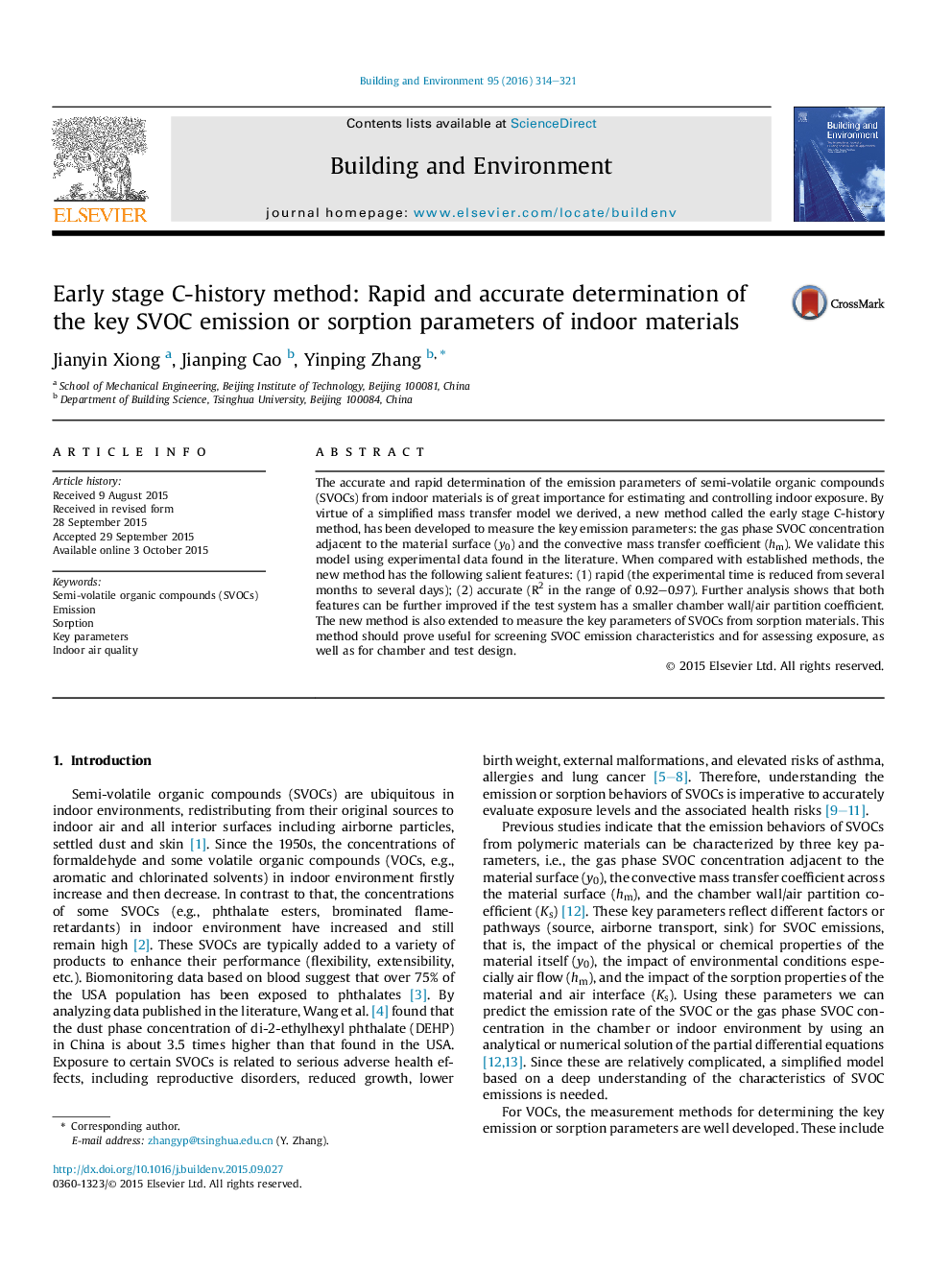| Article ID | Journal | Published Year | Pages | File Type |
|---|---|---|---|---|
| 247777 | Building and Environment | 2016 | 8 Pages |
•A simplified model for characterizing SVOC emission from indoor materials is derived.•An early stage C-history method is developed to measure the key emission parameters.•The method applies transient state concentrations to get parameters and is rapid.•The model and measurement method are verified with experimental data from literature.
The accurate and rapid determination of the emission parameters of semi-volatile organic compounds (SVOCs) from indoor materials is of great importance for estimating and controlling indoor exposure. By virtue of a simplified mass transfer model we derived, a new method called the early stage C-history method, has been developed to measure the key emission parameters: the gas phase SVOC concentration adjacent to the material surface (y0) and the convective mass transfer coefficient (hm). We validate this model using experimental data found in the literature. When compared with established methods, the new method has the following salient features: (1) rapid (the experimental time is reduced from several months to several days); (2) accurate (R2 in the range of 0.92–0.97). Further analysis shows that both features can be further improved if the test system has a smaller chamber wall/air partition coefficient. The new method is also extended to measure the key parameters of SVOCs from sorption materials. This method should prove useful for screening SVOC emission characteristics and for assessing exposure, as well as for chamber and test design.
